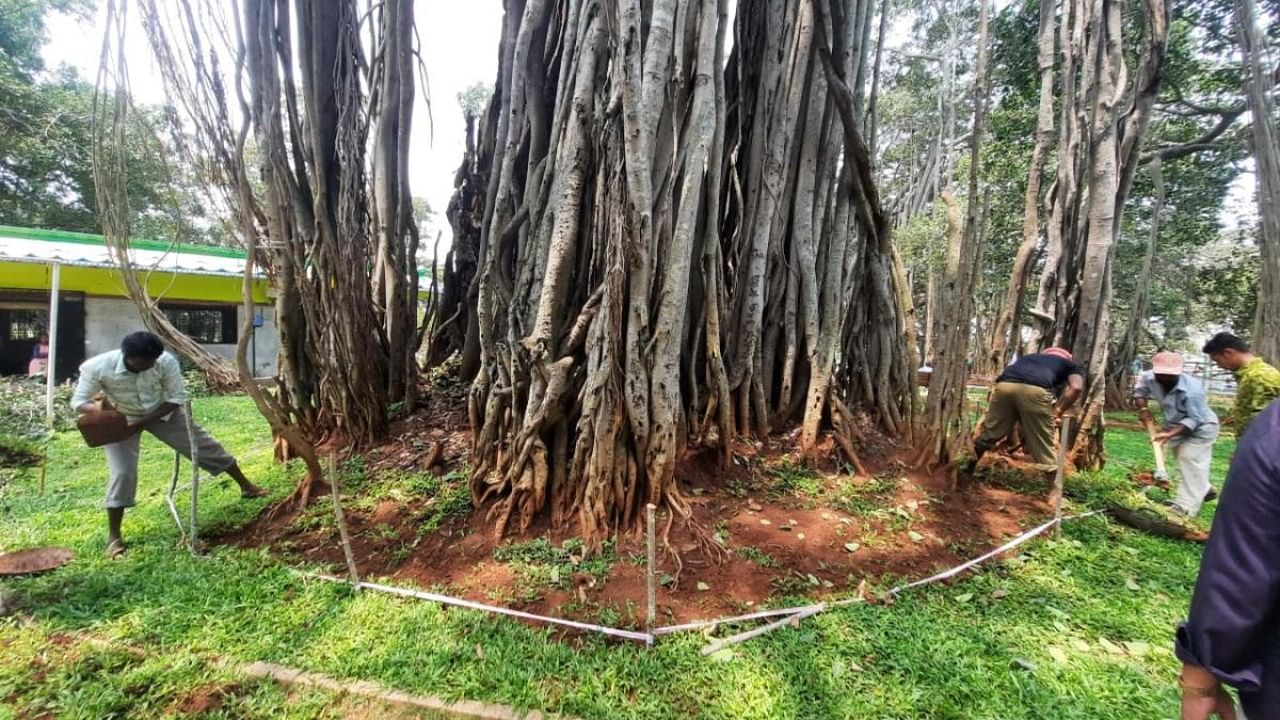

Last week's heavy rain and wind may have damaged one of Bengaluru's natural treasures, the Big Banyan Tree, but the Horticulture Department is ensuring that the fallen trunk and branches live on in another way.
The department is converting the branches into 25 stumps (saplings) after the committee of experts set up to conserve the 400-year-old heritage tree recommended a set of measures, including in situ conservation, to protect it in the short-term and long-term.
Over the last seven days, workers cleared all the organic waste on the ground as the department focused on implementing the short-term measures. These included converting the fallen branches and the uprooted trunk into stumps which were planted in vacant spaces.
“As per the instructions, the department has managed to get 25 stumps from the fallen branches which were treated with root hormones and planted in the vacant areas. We expect to make another 25 stumps. This shows that nothing in nature goes to waste,” former environment secretary A N Yellappa Reddy, who leads the committee, told DH.
Two big prop roots have been given mud packing support at the bottom which is walled with stones. Over time, the two will take roots and become secondary trunks, which is the best support to the heritage tree.
To a question, Reddy said work was ongoing to pull the prop roots of the branches leaning on one side and divert them to the appropriate direction to balance the weight.
Horticulture Department Joint Director M Jagadeesh said they expect at least 50% of the stumps to survive and develop into healthy saplings. "Considering the good weather conditions, the survival rate may go up to even 75%," he said.
Long-term measures
To implement the wind corridor, a measure which involves trimming some branches of the tree to reduce resistance, officials in the Horticulture Department will now begin studying the wind pattern in the area.
A survey will be conducted to understand the wind directions and the data from the India Meteorological Department will be studied to know the seasonal variations in the direction and force of the winds.
Officials said a wind corridor has already formed through natural flow of gales but further intervention will be taken up based on necessity.